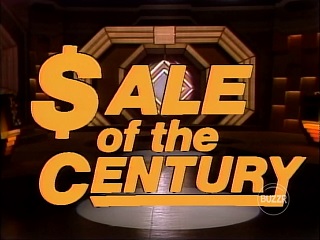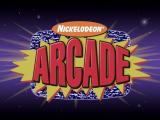Who Wants to Be a Millionaire? is an international television game show franchise of British origin, created by David Briggs, Mike Whitehill and Steven Knight. In its format, currently owned and licensed by Sony Pictures Television, contestants tackle a series of multiple-choice questions to win large cash prizes in a format that twists on many game show genre conventions – only one contestant plays at a time, similar to radio quizzes; contestants are given the question before deciding whether to answer, and have no time limit to answer questions; and the amount offered increases as they tackle questions that become increasingly difficult. The maximum cash prize offered in most versions of the format is an aspirational value in local currency, such as £1 million in the UK or ₹75 million in India.

Hollywood Squares is an American game show in which two contestants compete in a game of tic-tac-toe to win cash and prizes. The show piloted on NBC in 1965 and the regular series debuted in 1966 on the same network. The board for the game is a 3 × 3 vertical stack of open-faced cubes, each occupied by a celebrity seated at a desk and facing the contestants. The stars are asked questions by the host and the contestants judge the truth of their answers to gain squares in the right pattern to win the game.

Match Game is an American television panel game show that premiered on NBC in 1962 and has been revived several times over the course of the last six decades. The game features contestants trying to match answers given by celebrity panelists to fill-in-the-blank questions. Beginning with the CBS run of the 1970s, the questions are often formed as humorous double entendres.

Sale of the Century is an American television game show that originally debuted on September 29, 1969, on NBC daytime. It was one of three NBC game shows to premiere on that date, the other two being the short-lived game shows Letters to Laugh-In and Name Droppers. The series aired until July 13, 1973, and a weekly syndicated series began that fall and ran for one season.
The Joker's Wild is an American television game show that aired at different times between 1972 and 2019. In the show, contestants answer questions based on categories determined randomly by a mechanism resembling a slot machine. The show's title refers to the game's slot-machine mechanism also having jokers.
The Power Team is an animated series that aired as a segment of the video game reviewing show Video Power during the show's first season. While there were 33 episodes in the first season of Video Power, only 26 episodes of The Power Team were produced. As a result, some episodes of The Power Team would be aired more than once. The Power Team segments were re-edited and repackaged as a stand-alone show after Video Power underwent a format change for its second season. The Power Team was directed by Steven Martiniere and Jack Olesker was the developer and story editor. The cartoon series was produced by Bohbot Entertainment.

Masters of the Maze is a children's television game show that aired on the Family Channel from August 29, 1994, to September 15, 1995. After the last episode aired, the show went into reruns until September 22, 1996. The first season was hosted by J.D. Roth, and the second season was hosted by Mario Lopez.
A*mazing is an Australian children's television game show that aired between 16 May 1994 until 1998 on the Seven Network. It was famous for a relatively large and elaborate maze/obstacle course that was part of the show's studio set. A*mazing was hosted by James Sherry for the entire run of the series. A*mazing was produced at Channel 7 in Brisbane from 1994 to 1996 and then at Channel 7 in Perth from 1997 to 1998.
Starcade is an American game show where contestants competed against one another by playing arcade video games. The series originally aired on WTBS from 1982 to 1983, followed by a run in syndication for the following season.
webRIOT is a game show that debuted on MTV on November 29, 1999. It was hosted by Ahmet Zappa and Masasa served as the announcer. The gameplay consisted of contestants answering multiple-choice music trivia questions while accompanying music videos played. After the question was read, four choices appeared and incorrect choices slowly disappeared as the score clock decreased. Contestants could lock in their choice at any time, though faster choices garnered more points. Incorrect choices deducted points from a player's score, at half the value left on their clock. The game started with four contestants and consisted of three rounds. In round 1, the value of the question started at 250 points, and doubled to 500 points in round 2. After each of the first two rounds, one contestant was eliminated. The final round was a two-minute "speed" round between the two remaining contestants with all questions being toss-ups. A right answer was worth 1,000 points, while a wrong answer costed 500 points and gave the opponent a chance to respond, if they had not already. Videos here would be added effects to make them less visible. The winner received a prize such as a trip.

Temptation is an Australian game show which premiered on the Nine Network on 30 May 2005 and aired at 7.00pm. Hosted by Ed Phillips and Livinia Nixon, the show was a remake of Sale of the Century, which aired on Nine in the same timeslot for more than twenty years between 1980 and 2001. Temptation had the same general format of its predecessor, but with several new features and a de-emphasis on the "shopping" aspects of the endgame. The show ran until 30 November 2007, when it was placed on hiatus by the network following strong competition from game show Deal or No Deal on the rival Seven Network; during the hiatus, Nine filled the timeslot with episodes of the American sitcom Two and a Half Men. When Ed Phillips made an appearance on The NRL Footy Show he announced "maybe summer" would be the return of the show. This statement was accurate, as Temptation returned for a shortened fourth series from 1 December 2008 with unaired episodes which were recorded during 2008. During that time, Ed Phillips was dumped by the Nine Network after his contract expired in November, and Temptation never returned to the schedule. After 23 January 2009, when the show's final episode aired, all Temptation websites were removed, and Two and a Half Men returned to Channel Nine's 7:00pm schedule.
Sale of the Century is an Australian prime time game show that aired on the Nine Network from 14 July 1980 to 29 November 2001. It is based on both Great Temptation that aired from 1970 to 1974 and on the original Sale that first aired in the United States from 1969 to 1973. The Australian format of Sale has since been used internationally, including in a revived US version that aired from 1983 to 1989.

Uh Oh! is a Canadian television game show that was created by Rick Watts and Frank Young. Following a sneak preview at YTV Psykoblast on August 16, Uh Oh! aired from August 22, 1997 to April 19, 2003 on YTV, and was a spin-off of the popular variety show It's Alive!, which also aired on YTV. Uh Oh! was part of It's Alive's game show segment during its third season, but existed as a parody during its second season. As of 2023, Uh Oh! is the third longest-running show on YTV, behind Hit List and Video & Arcade Top 10, both of which aired for 14 and 15 years respectively. For its entire run, Uh Oh! was taped at Global Television in Toronto, Ontario. The series ended on April 19, 2003.
Camouflage is an American television game show originally produced in 1961–62 and revived in 1980.

Break the Bank is an American game show created by Jack Barry and Dan Enright and produced by their production company, Barry & Enright Productions. It was the first game show packaged by Barry and Enright as a tandem since their fall from grace following the 1950s quiz show scandals.

Video & Arcade Top 10 was a Canadian game show broadcast on YTV from 1991 to 2006. Filmed in Toronto, Ontario, it was a competitive game show in which contestants played against each other in video games for prizes, with assorted review and profile segments on current games, music, and movies featured as well. V&A Top 10 is one of a select few English language Canadian game shows to run nationally for at least 15 years, joining Front Page Challenge, Reach For The Top, and Definition in that category. Reruns of the series from the late 1990s and 2000s aired on GameTV from November 2011 to September 2012.
Sports Geniuses is an American sports-themed game show that aired for 65 episodes from March 27, 2000, until June 23, 2000, on cable channel Fox Sports Net. It was the network's second game show. The advertising campaign for the show won a Clio Award.
Rumor Has It is an American daily game show that aired on the cable channel VH1 from June 7 to October 28, 1993. Brian O'Connor was the host and John Ten Eyck announced.

Nick Arcade is an American children's game show created by James Bethea and Karim Miteff and hosted by Phil Moore, with Andrea Lively announcing, that aired on Nickelodeon in 1992. It aired originally during weekend afternoons, with reruns airing until September 28, 1997. In the first season, the shows were taped in December 1991 and aired in early 1992. It was taped at Nickelodeon Studios at Universal Studios Florida in Orlando. In Nick Arcade, two teams of contestants played two initial trivia rounds, with the winning team advancing to the "Video Zone" to play against the virtual "Video Game Wizard" of the day.

Ask Me Another is an hour-long radio puzzle game show that was produced by WNYC and National Public Radio. It was hosted by Canadian American comedian Ophira Eisenberg and featured as its "in-house musician" or "one-man house band" independent rock musician Jonathan Coulton. Episodes of the show were usually recorded at The Bell House in Brooklyn, New York, however the show did go to various states across the country and recorded one or more episodes from those locations. The show was produced by WNYC Studios. During the COVID-19 pandemic in the United States, the show continued taping episodes from the homes of the participants, without a studio audience.










